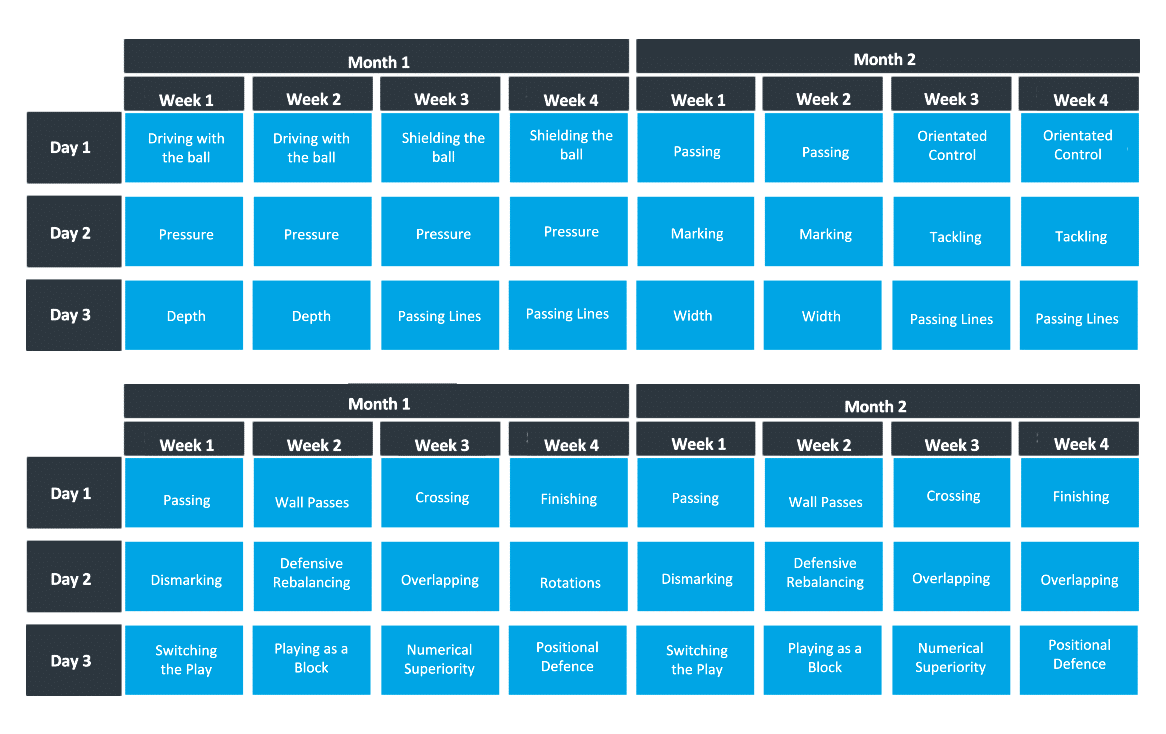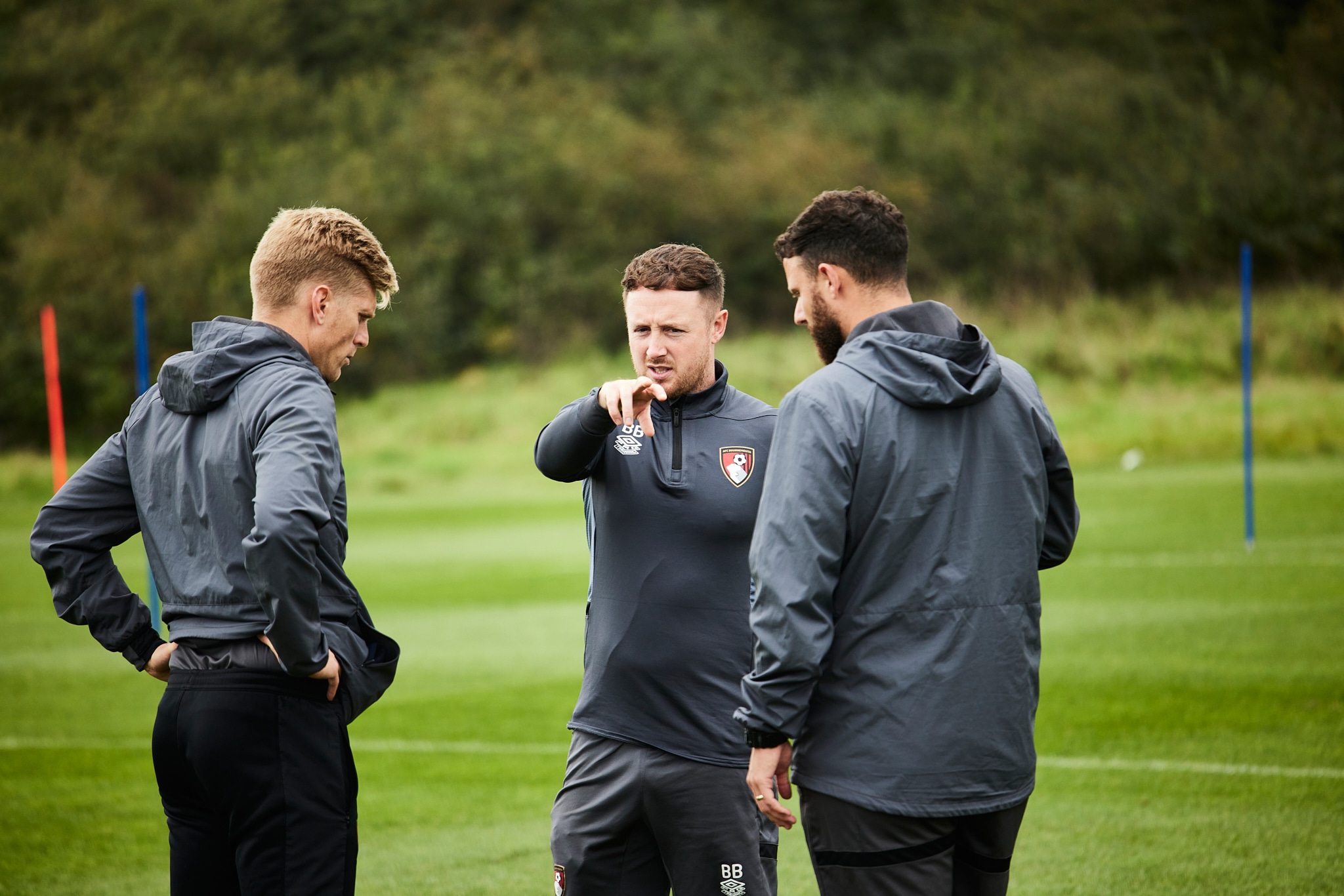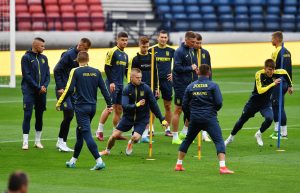The planning and programming of training content is a fundamental part of selecting and organising what content to train with our team. But, above all, it helps us to determine when we will train each type of content during the season.
Before defining the steps that make up a correct content programming, it is important to define the concept of ‘programming’ and differentiate it from ‘planning’.
While planning refers to the selection of content that we can train with our team according to their characteristics and needs in relation to the understanding of the game, programming consists of organising these training contents throughout the season, the months, the weeks and the training sessions. To do this, we define five steps that will help us to ensure that this programming follows a logical progression.

1. Prioritise
It consists of selecting the training content that we have to start training based on the previous planning of the content that the players need to master and improve. And what will this content be? Priority will be given to those from the previous sub-stage that have not yet been consolidated or those simpler ones from the current sub-stage.
For example, if players need to master driving with the ball, but have not yet mastered it, we should prioritise that content ahead of other content from the current sub-stage that the team is in. In this way, the team will follow a logical learning progression during the development period.
2. Order
Once we know which content we will train first, it is time to order them. This order will depend on the number of training sessions per week that the team trains, and the content will be grouped by typology.
For example, if the team trains three days a week, we can group the attacking content on day 1, the defensive content on day 2 and the collective content on day 3. Or the content with the ball on day 1 and the content without the ball on day 2, in the case of training 2 days a week.
Figure 2. Examples of content ordering according to number of training days per week. Source: MBP Coaches’ School
3. Sequence
This is an important step because it is where the training content of the same block is related throughout the season. It aims to facilitate the learning process of the players on these types of content. To do this, a link must be found between the content, so that they appear in the game in a simultaneous or chained way so that it is easier to relate them in the training sessions.
For example: passing – dismarking – passing lines; dribbling – defensive cover – depth; passing – overlapping – numerical superiority. These behaviours can appear simultaneously or linked to each other in the play. The aim of the sequencing, therefore, is to link the content that is trained during the week.

4. Connect
This step consists of linking the training content of different blocks (complementary and basic), with the aim of facilitating the players’ learning process on this content, and can be applied in the programming of the weekly microcycle, as it involves linking the main training content with the complementary one, such as coordination skills, perceptual skills or management of spaces.
In order to do this, it is necessary to look for a link between the content in such a way that they show a close relationship in the play so that it is easier to teach them in the training sessions. We will see this more clearly with some examples:
Accelerations and changes of direction have a direct relationship with driving with the ball or with dismarking, as they are included in that main skill of the play.
We can also relate passing to the perception of the space nearby, so that it allows the on-ball player to identify the free teammate. Or the changes of direction with the rational distribution of space, in order to have players correctly positioned on the pitch to move the ball from one wide channel to the other.

5. Time
Finally, we find the timing of the training content, which consists of specifying the time of dedication to each content once we have organised them during the season.
It should be kept in mind that the time planned for training each content and the actual time may vary, so it should be adjusted according to the pace of consolidation by the players. MBP (2014) recommends training only one main content and concept in each training session, together with other complementary content and concepts. For example: marking (IBF without the ball) and the perceptual ability of nearby spaces (complementary).
Finally, we should remember that the content should be repeated during the season to ensure the understanding and consolidation by the players, with the possibility of varying their frequency.

With this, it is clear that the fact of programming the content will provide us with greater organisation and efficiency in our work as coaches, acting as our roadmap throughout the season.
Do you want to improve you and your players’ training?
In the Online Expert in Youth Football course, you will learn to identify the main characteristics of youth players and to classify them according to their level of understanding of the game. All of this will allow you to select the most appropriate training content according to their needs and, consequently, to design training sessions and tasks that respect and favour their learning processes in order to, over time, help develop better players.








